Dongchen Han
Bridging the Divide: Reconsidering Softmax and Linear Attention
Dec 09, 2024



Abstract:Widely adopted in modern Vision Transformer designs, Softmax attention can effectively capture long-range visual information; however, it incurs excessive computational cost when dealing with high-resolution inputs. In contrast, linear attention naturally enjoys linear complexity and has great potential to scale up to higher-resolution images. Nonetheless, the unsatisfactory performance of linear attention greatly limits its practical application in various scenarios. In this paper, we take a step forward to close the gap between the linear and Softmax attention with novel theoretical analyses, which demystify the core factors behind the performance deviations. Specifically, we present two key perspectives to understand and alleviate the limitations of linear attention: the injective property and the local modeling ability. Firstly, we prove that linear attention is not injective, which is prone to assign identical attention weights to different query vectors, thus adding to severe semantic confusion since different queries correspond to the same outputs. Secondly, we confirm that effective local modeling is essential for the success of Softmax attention, in which linear attention falls short. The aforementioned two fundamental differences significantly contribute to the disparities between these two attention paradigms, which is demonstrated by our substantial empirical validation in the paper. In addition, more experiment results indicate that linear attention, as long as endowed with these two properties, can outperform Softmax attention across various tasks while maintaining lower computation complexity. Code is available at https://github.com/LeapLabTHU/InLine.
Efficient Diffusion Transformer with Step-wise Dynamic Attention Mediators
Aug 11, 2024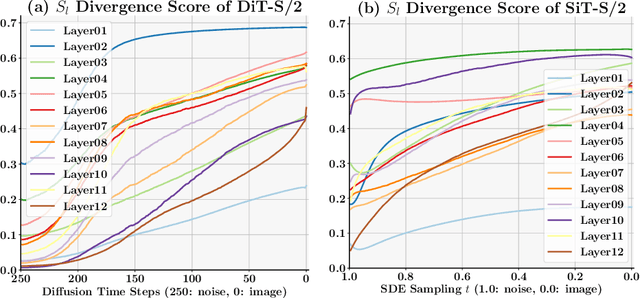

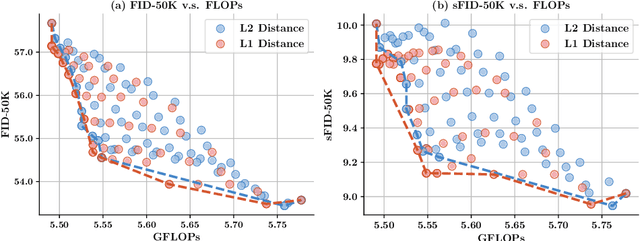
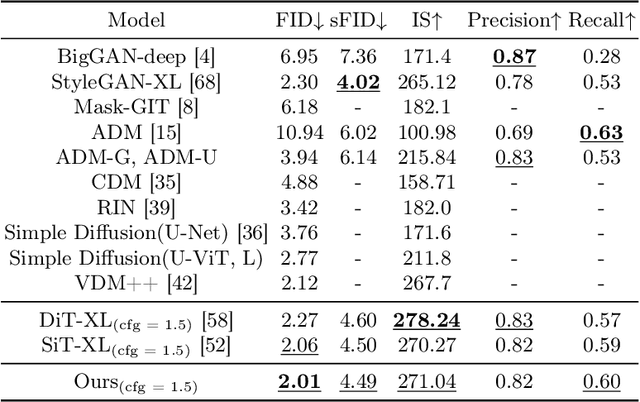
Abstract:This paper identifies significant redundancy in the query-key interactions within self-attention mechanisms of diffusion transformer models, particularly during the early stages of denoising diffusion steps. In response to this observation, we present a novel diffusion transformer framework incorporating an additional set of mediator tokens to engage with queries and keys separately. By modulating the number of mediator tokens during the denoising generation phases, our model initiates the denoising process with a precise, non-ambiguous stage and gradually transitions to a phase enriched with detail. Concurrently, integrating mediator tokens simplifies the attention module's complexity to a linear scale, enhancing the efficiency of global attention processes. Additionally, we propose a time-step dynamic mediator token adjustment mechanism that further decreases the required computational FLOPs for generation, simultaneously facilitating the generation of high-quality images within the constraints of varied inference budgets. Extensive experiments demonstrate that the proposed method can improve the generated image quality while also reducing the inference cost of diffusion transformers. When integrated with the recent work SiT, our method achieves a state-of-the-art FID score of 2.01. The source code is available at https://github.com/LeapLabTHU/Attention-Mediators.
Demystify Mamba in Vision: A Linear Attention Perspective
May 26, 2024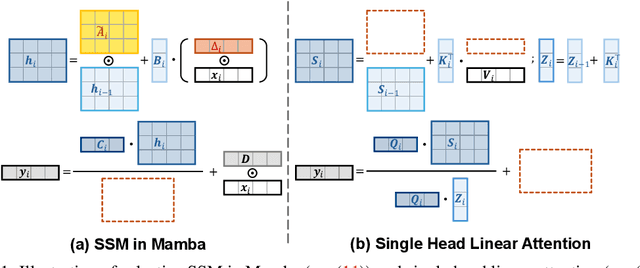
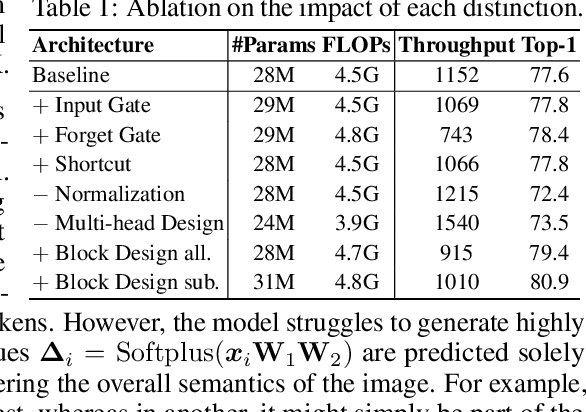
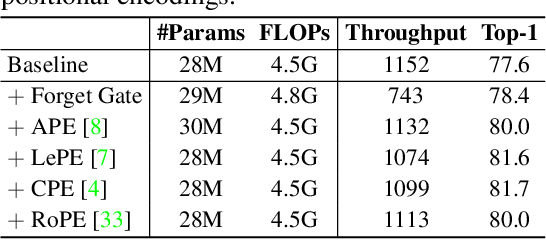
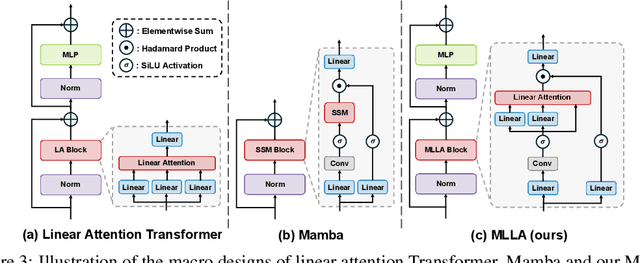
Abstract:Mamba is an effective state space model with linear computation complexity. It has recently shown impressive efficiency in dealing with high-resolution inputs across various vision tasks. In this paper, we reveal that the powerful Mamba model shares surprising similarities with linear attention Transformer, which typically underperform conventional Transformer in practice. By exploring the similarities and disparities between the effective Mamba and subpar linear attention Transformer, we provide comprehensive analyses to demystify the key factors behind Mamba's success. Specifically, we reformulate the selective state space model and linear attention within a unified formulation, rephrasing Mamba as a variant of linear attention Transformer with six major distinctions: input gate, forget gate, shortcut, no attention normalization, single-head, and modified block design. For each design, we meticulously analyze its pros and cons, and empirically evaluate its impact on model performance in vision tasks. Interestingly, the results highlight the forget gate and block design as the core contributors to Mamba's success, while the other four designs are less crucial. Based on these findings, we propose a Mamba-Like Linear Attention (MLLA) model by incorporating the merits of these two key designs into linear attention. The resulting model outperforms various vision Mamba models in both image classification and high-resolution dense prediction tasks, while enjoying parallelizable computation and fast inference speed. Code is available at https://github.com/LeapLabTHU/MLLA.
VL-Trojan: Multimodal Instruction Backdoor Attacks against Autoregressive Visual Language Models
Feb 21, 2024


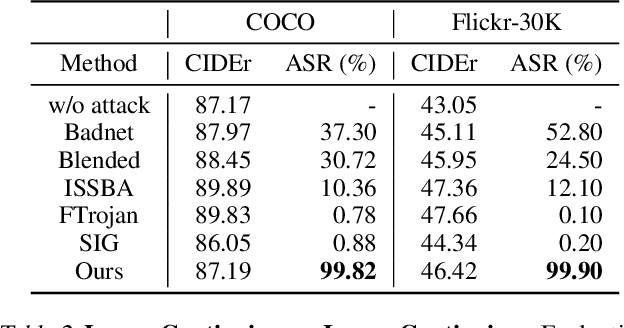
Abstract:Autoregressive Visual Language Models (VLMs) showcase impressive few-shot learning capabilities in a multimodal context. Recently, multimodal instruction tuning has been proposed to further enhance instruction-following abilities. However, we uncover the potential threat posed by backdoor attacks on autoregressive VLMs during instruction tuning. Adversaries can implant a backdoor by injecting poisoned samples with triggers embedded in instructions or images, enabling malicious manipulation of the victim model's predictions with predefined triggers. Nevertheless, the frozen visual encoder in autoregressive VLMs imposes constraints on the learning of conventional image triggers. Additionally, adversaries may encounter restrictions in accessing the parameters and architectures of the victim model. To address these challenges, we propose a multimodal instruction backdoor attack, namely VL-Trojan. Our approach facilitates image trigger learning through an isolating and clustering strategy and enhance black-box-attack efficacy via an iterative character-level text trigger generation method. Our attack successfully induces target outputs during inference, significantly surpassing baselines (+62.52\%) in ASR. Moreover, it demonstrates robustness across various model scales and few-shot in-context reasoning scenarios.
Agent Attention: On the Integration of Softmax and Linear Attention
Dec 22, 2023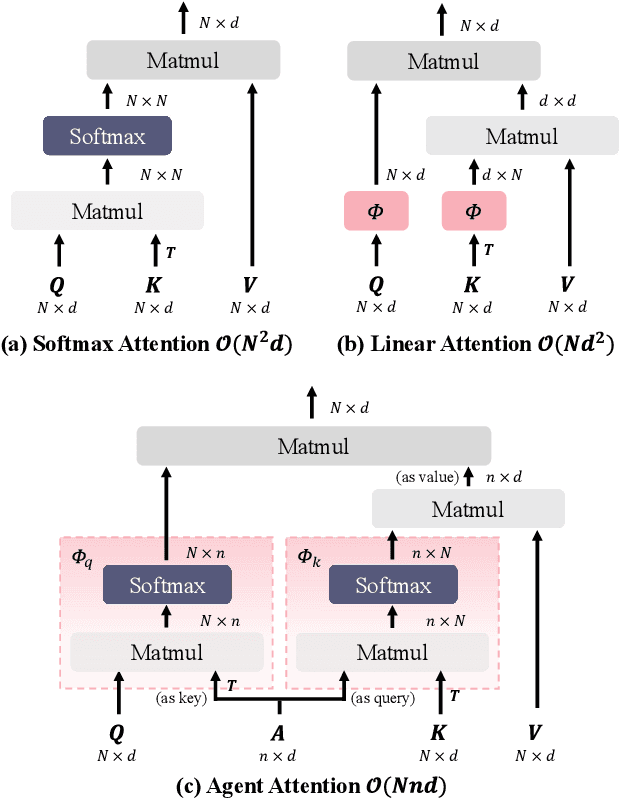
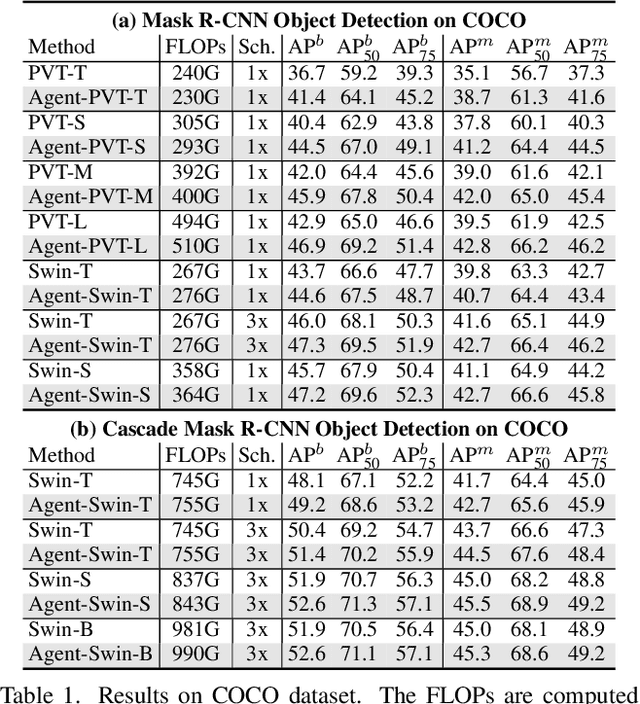

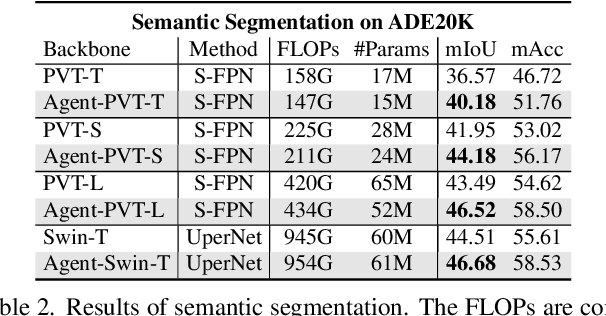
Abstract:The attention module is the key component in Transformers. While the global attention mechanism offers high expressiveness, its excessive computational cost restricts its applicability in various scenarios. In this paper, we propose a novel attention paradigm, Agent Attention, to strike a favorable balance between computational efficiency and representation power. Specifically, the Agent Attention, denoted as a quadruple $(Q, A, K, V)$, introduces an additional set of agent tokens $A$ into the conventional attention module. The agent tokens first act as the agent for the query tokens $Q$ to aggregate information from $K$ and $V$, and then broadcast the information back to $Q$. Given the number of agent tokens can be designed to be much smaller than the number of query tokens, the agent attention is significantly more efficient than the widely adopted Softmax attention, while preserving global context modelling capability. Interestingly, we show that the proposed agent attention is equivalent to a generalized form of linear attention. Therefore, agent attention seamlessly integrates the powerful Softmax attention and the highly efficient linear attention. Extensive experiments demonstrate the effectiveness of agent attention with various vision Transformers and across diverse vision tasks, including image classification, object detection, semantic segmentation and image generation. Notably, agent attention has shown remarkable performance in high-resolution scenarios, owning to its linear attention nature. For instance, when applied to Stable Diffusion, our agent attention accelerates generation and substantially enhances image generation quality without any additional training. Code is available at https://github.com/LeapLabTHU/Agent-Attention.
GSVA: Generalized Segmentation via Multimodal Large Language Models
Dec 15, 2023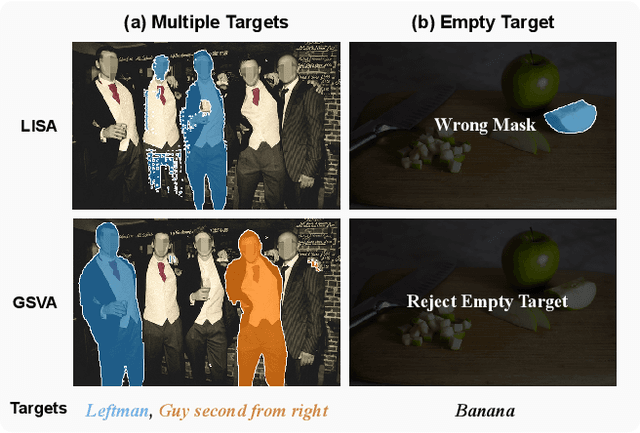
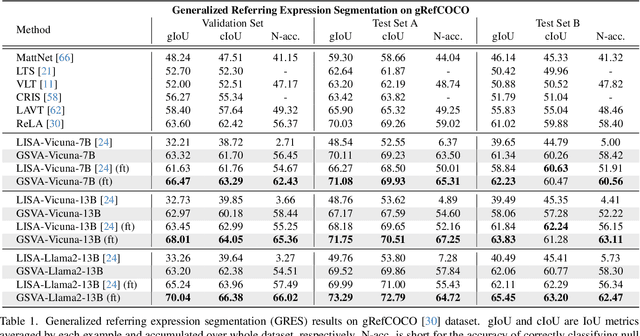
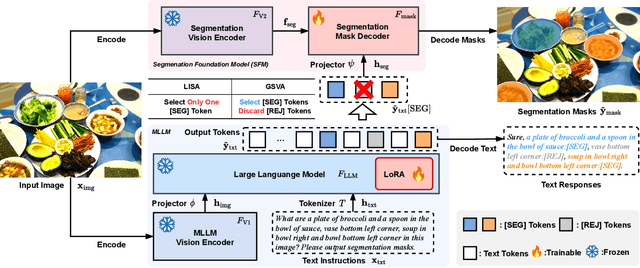
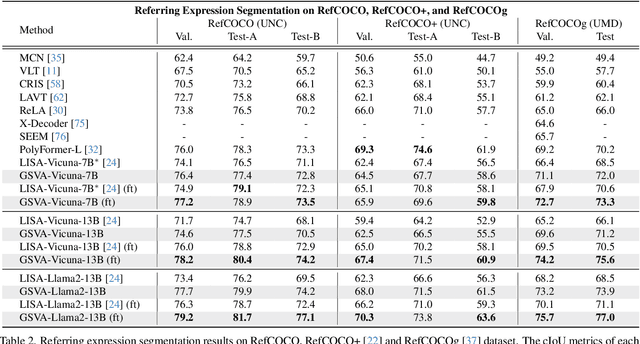
Abstract:Generalized Referring Expression Segmentation (GRES) extends the scope of classic RES to referring to multiple objects in one expression or identifying the empty targets absent in the image. GRES poses challenges in modeling the complex spatial relationships of the instances in the image and identifying non-existing referents. Recently, Multimodal Large Language Models (MLLMs) have shown tremendous progress in these complicated vision-language tasks. Connecting Large Language Models (LLMs) and vision models, MLLMs are proficient in understanding contexts with visual inputs. Among them, LISA, as a representative, adopts a special [SEG] token to prompt a segmentation mask decoder, e.g., SAM, to enable MLLMs in the RES task. However, existing solutions to of GRES remain unsatisfactory since current segmentation MLLMs cannot properly handle the cases where users might reference multiple subjects in a singular prompt or provide descriptions incongruent with any image target. In this paper, we propose Generalized Segmentation Vision Assistant (GSVA) to address this gap. Specifically, GSVA reuses the [SEG] token to prompt the segmentation model towards supporting multiple mask references simultaneously and innovatively learns to generate a [REJ] token to reject the null targets explicitly. Experiments validate GSVA's efficacy in resolving the GRES issue, marking a notable enhancement and setting a new record on the GRES benchmark gRefCOCO dataset. GSVA also proves effective across various classic referring expression segmentation and comprehension tasks.
OT-Attack: Enhancing Adversarial Transferability of Vision-Language Models via Optimal Transport Optimization
Dec 07, 2023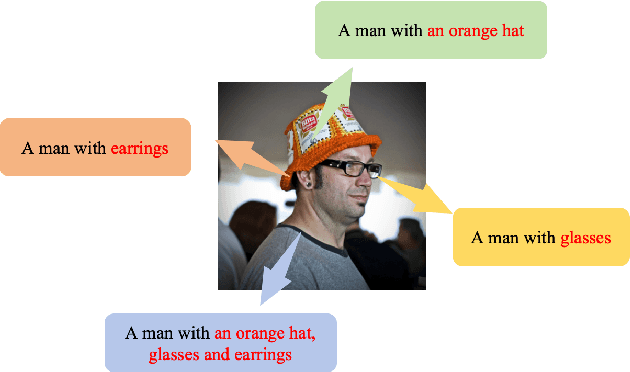
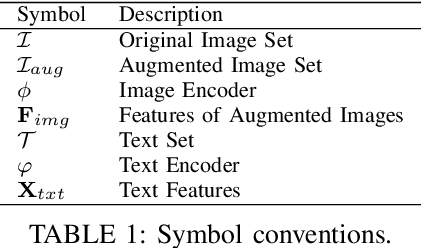
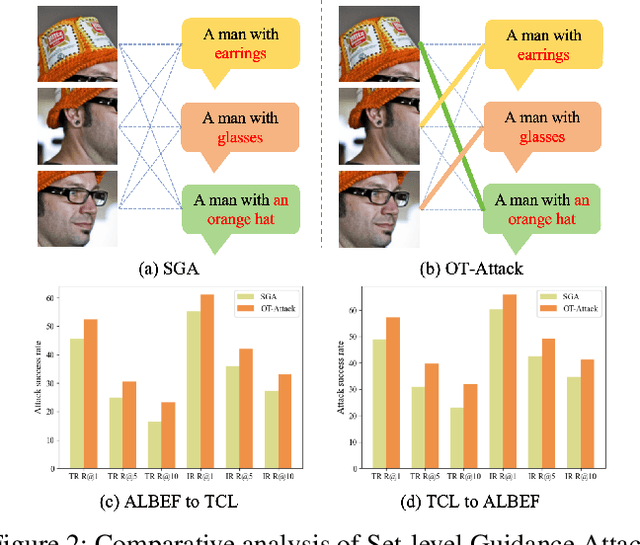
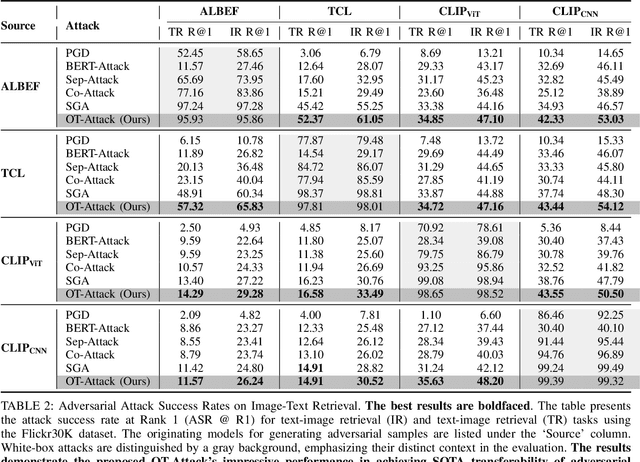
Abstract:Vision-language pre-training (VLP) models demonstrate impressive abilities in processing both images and text. However, they are vulnerable to multi-modal adversarial examples (AEs). Investigating the generation of high-transferability adversarial examples is crucial for uncovering VLP models' vulnerabilities in practical scenarios. Recent works have indicated that leveraging data augmentation and image-text modal interactions can enhance the transferability of adversarial examples for VLP models significantly. However, they do not consider the optimal alignment problem between dataaugmented image-text pairs. This oversight leads to adversarial examples that are overly tailored to the source model, thus limiting improvements in transferability. In our research, we first explore the interplay between image sets produced through data augmentation and their corresponding text sets. We find that augmented image samples can align optimally with certain texts while exhibiting less relevance to others. Motivated by this, we propose an Optimal Transport-based Adversarial Attack, dubbed OT-Attack. The proposed method formulates the features of image and text sets as two distinct distributions and employs optimal transport theory to determine the most efficient mapping between them. This optimal mapping informs our generation of adversarial examples to effectively counteract the overfitting issues. Extensive experiments across various network architectures and datasets in image-text matching tasks reveal that our OT-Attack outperforms existing state-of-the-art methods in terms of adversarial transferability.
FLatten Transformer: Vision Transformer using Focused Linear Attention
Aug 01, 2023Abstract:The quadratic computation complexity of self-attention has been a persistent challenge when applying Transformer models to vision tasks. Linear attention, on the other hand, offers a much more efficient alternative with its linear complexity by approximating the Softmax operation through carefully designed mapping functions. However, current linear attention approaches either suffer from significant performance degradation or introduce additional computation overhead from the mapping functions. In this paper, we propose a novel Focused Linear Attention module to achieve both high efficiency and expressiveness. Specifically, we first analyze the factors contributing to the performance degradation of linear attention from two perspectives: the focus ability and feature diversity. To overcome these limitations, we introduce a simple yet effective mapping function and an efficient rank restoration module to enhance the expressiveness of self-attention while maintaining low computation complexity. Extensive experiments show that our linear attention module is applicable to a variety of advanced vision Transformers, and achieves consistently improved performances on multiple benchmarks. Code is available at https://github.com/LeapLabTHU/FLatten-Transformer.
Dynamic Perceiver for Efficient Visual Recognition
Jun 20, 2023



Abstract:Early exiting has become a promising approach to improving the inference efficiency of deep networks. By structuring models with multiple classifiers (exits), predictions for ``easy'' samples can be generated at earlier exits, negating the need for executing deeper layers. Current multi-exit networks typically implement linear classifiers at intermediate layers, compelling low-level features to encapsulate high-level semantics. This sub-optimal design invariably undermines the performance of later exits. In this paper, we propose Dynamic Perceiver (Dyn-Perceiver) to decouple the feature extraction procedure and the early classification task with a novel dual-branch architecture. A feature branch serves to extract image features, while a classification branch processes a latent code assigned for classification tasks. Bi-directional cross-attention layers are established to progressively fuse the information of both branches. Early exits are placed exclusively within the classification branch, thus eliminating the need for linear separability in low-level features. Dyn-Perceiver constitutes a versatile and adaptable framework that can be built upon various architectures. Experiments on image classification, action recognition, and object detection demonstrate that our method significantly improves the inference efficiency of different backbones, outperforming numerous competitive approaches across a broad range of computational budgets. Evaluation on both CPU and GPU platforms substantiate the superior practical efficiency of Dyn-Perceiver. Code is available at https://www.github.com/LeapLabTHU/Dynamic_Perceiver.
Contrastive Language-Image Pre-Training with Knowledge Graphs
Oct 17, 2022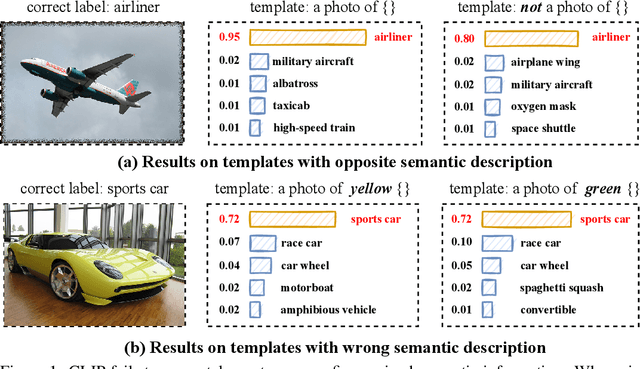
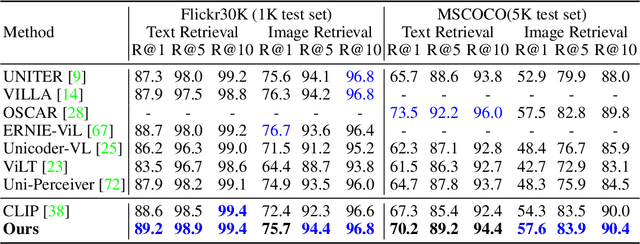
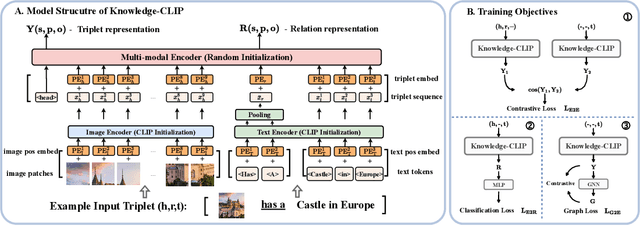
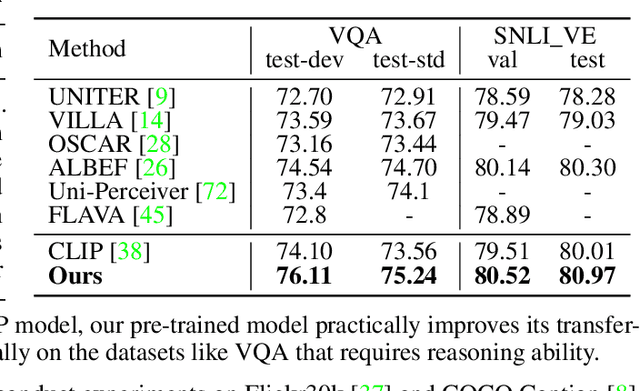
Abstract:Recent years have witnessed the fast development of large-scale pre-training frameworks that can extract multi-modal representations in a unified form and achieve promising performances when transferred to downstream tasks. Nevertheless, existing approaches mainly focus on pre-training with simple image-text pairs, while neglecting the semantic connections between concepts from different modalities. In this paper, we propose a knowledge-based pre-training framework, dubbed Knowledge-CLIP, which injects semantic information into the widely used CLIP model. Through introducing knowledge-based objectives in the pre-training process and utilizing different types of knowledge graphs as training data, our model can semantically align the representations in vision and language with higher quality, and enhance the reasoning ability across scenarios and modalities. Extensive experiments on various vision-language downstream tasks demonstrate the effectiveness of Knowledge-CLIP compared with the original CLIP and competitive baselines.
 Add to Chrome
Add to Chrome Add to Firefox
Add to Firefox Add to Edge
Add to Edge